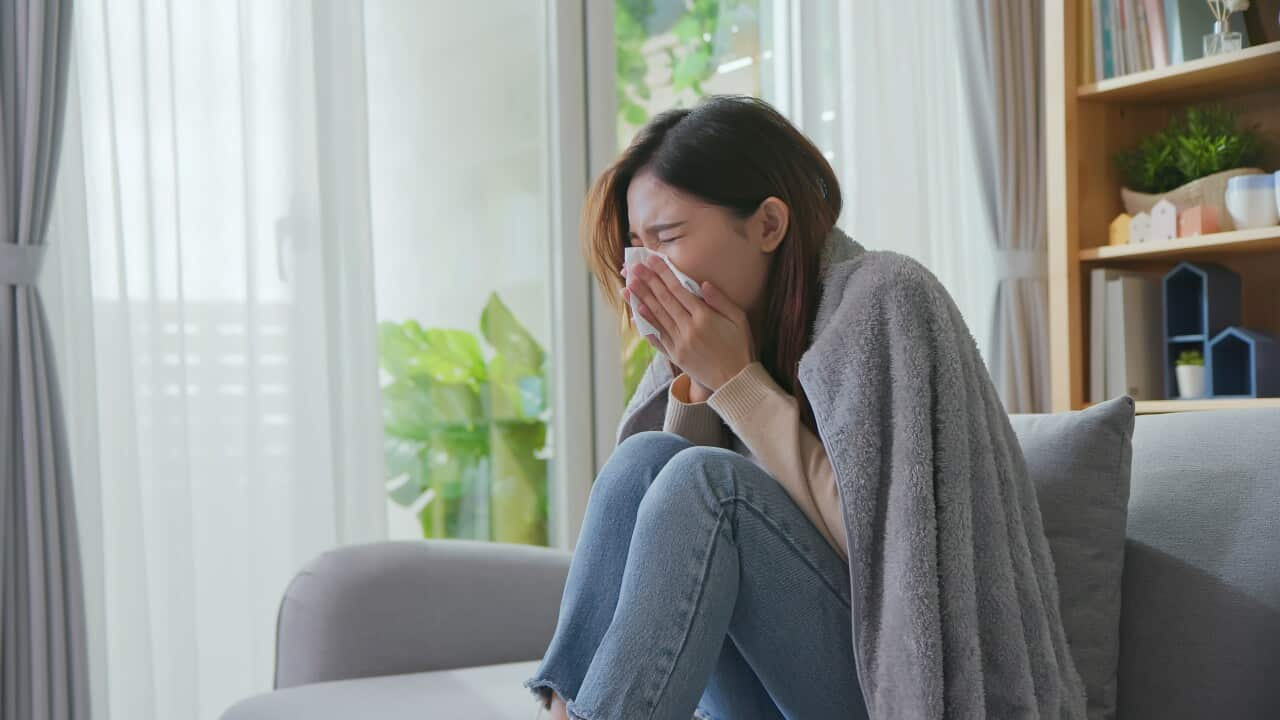Key Points
- Australia has declared a third La Niña event
- Hay fever or allergic rhinitis affects nearly one in five Australians every year
- If left untreated, hay fever can cause permanent deformities
Victoria resident Noriko Clark often catches sneezing, runny nose and itchy eyes during spring.
She takes a rapid antigen test every time she experiences these symptoms, as they overlap with COVID-19.
"It's usually hay fever when I feel tired or discomfort in my throat. But I don't take a chance and get myself tested," Ms Clark tells SBS.
Common symptoms between COVID and hay fever include cough, sneezing, runny nose, sore throat, feeling tired or weak, headache and loss of taste or smell, according to Australia's Department of Health and Aged Care.
COVID or hay fever?
Sydney-based general practitioner Dr Jason Yu says there is "generally a lot of overlap" between the symptoms of hay fever and COVID, and knowing the difference is important.
"Despite what the name suggests, hay fever does not cause fever and is usually not associated with muscle and body aches," Dr Yu explains.
"With hay fever, the discomfort in the throat is usually an irritation rather than a soreness."
Other symptoms of hay fever may include:
- interrupted sleep
- feeling tired during the day
- difficulty concentrating
- frequent headaches
- recurring sore throats
- a hoarse voice
- facial pain or pressure
- a reduced sense of smell
- frequent sinus infections in adults
- recurring ear infections in children

Dr Jason Yu suffers from moderate hay fever himself, and knows the struggles of the condition all to well Credit: Jason Yu
"Hay fever tends to be a bit more chronic. So they come and go," he says.
"You have good and bad days. You may notice symptoms one day, but disappear the next day, or it disappears in the afternoon or worsens - then it's more likely to be hay fever. But if your symptoms become progressively worse, then you might want to think about getting tested for COVID", Dr Yu explains.
If in doubt, always get tested for COVID
Residents can check their symptoms using the government-funded health direct website .

The difference between COVID-19, flu, cold and allergy symptoms. Credit: Department of Health
Hay fever and antihistamines
Hay fever and other allergies, such as hives, conjunctivitis and eczema, are generally treated using antihistamines.
But Dr Yu says antihistamines don't work on all allergies, including a nasal blockage from hay fever.
"People with severe nasal blockage due to hay fever should seek proper treatment, and parents should immediately consult a doctor if their child is mouth-breathing due to the condition," he says.
"It can result in facial deformity, and if you don't get treated early, before puberty, those deformities can be permanent," Dr Yu adds.
La Niña means more pollen
The third consecutive La Niña event has been declared in Australia.
The weather event is likely to bring above average rainfall and result in over production of pollen.
Health experts advise residents to watch out for thunderstorm asthma as well.
It is caused by a unique combination of high pollen levels in the air and certain thunderstorm condition.
The pollen grains are drawn into the thunderstorm cloud, absorbs water, suddenly bursts open, and is carried by the wind.
Dr Yu says wearing a mask can be effective during a pollen season.
"A face mask can give you double protection against COVID and hay fever," he adds.
He advises residents with moderate to severe hay fever symptoms to get an allergy test, seek treatment and avoid allergens.
SBS is committed to providing all COVID-19 updates to Australia’s multicultural and multilingual communities. Stay safe and stay informed by visiting regularly the
